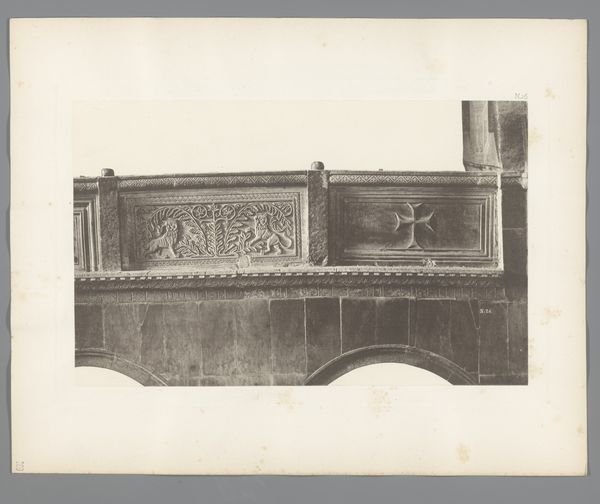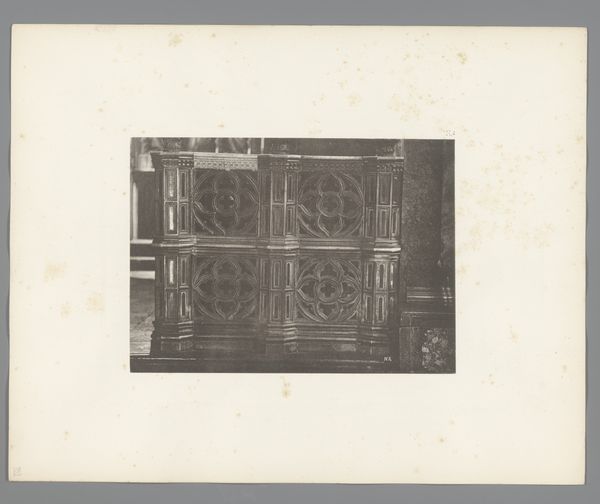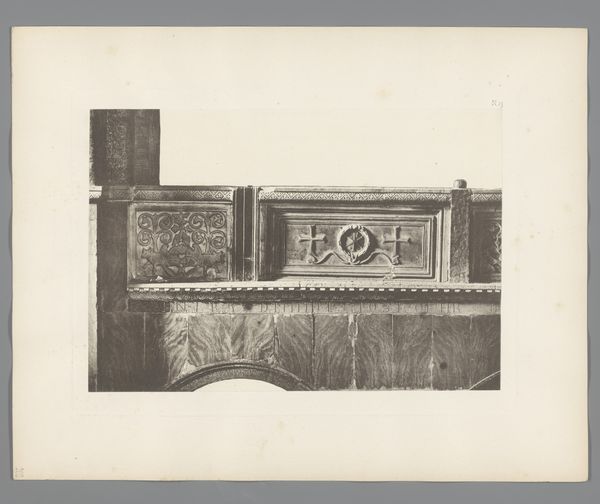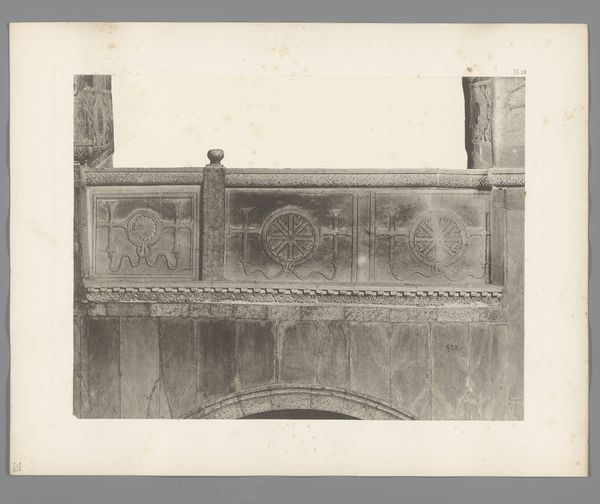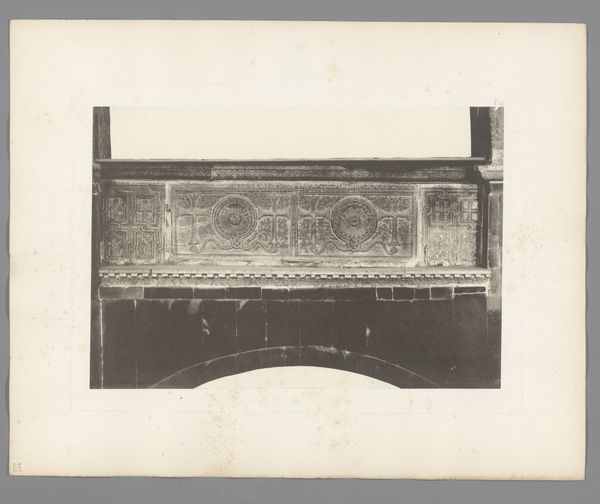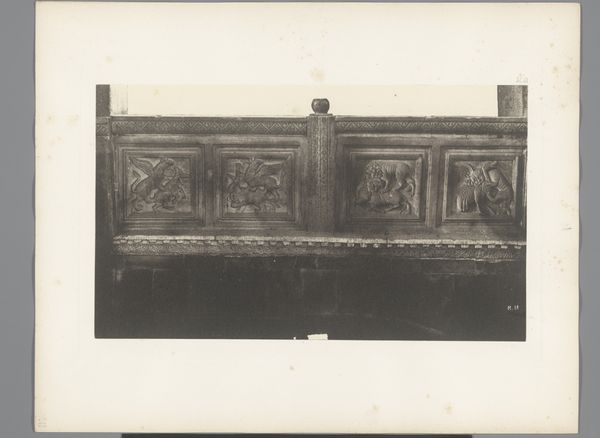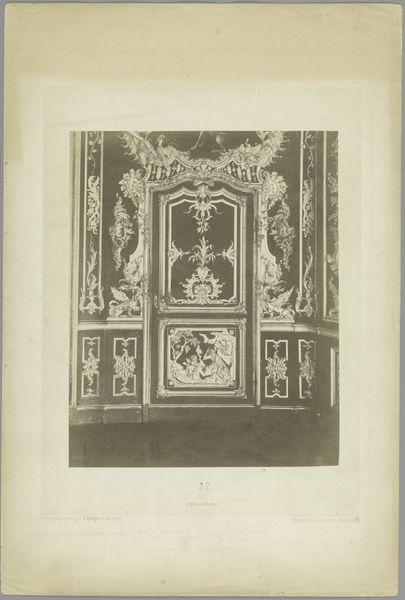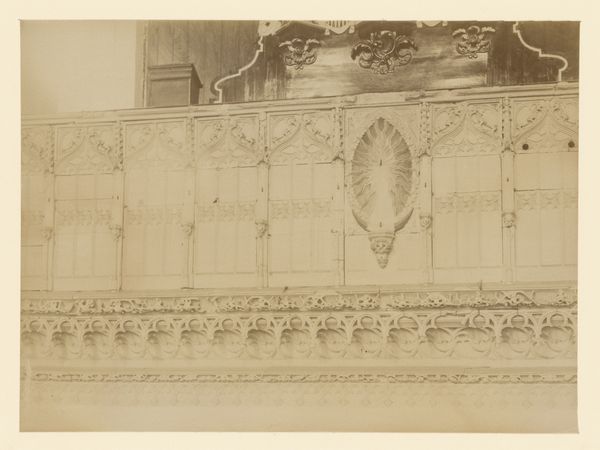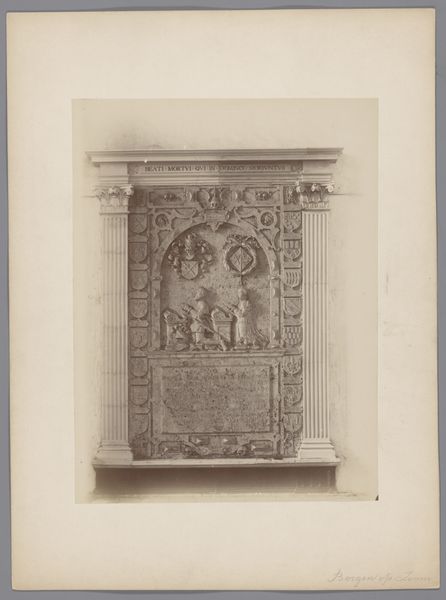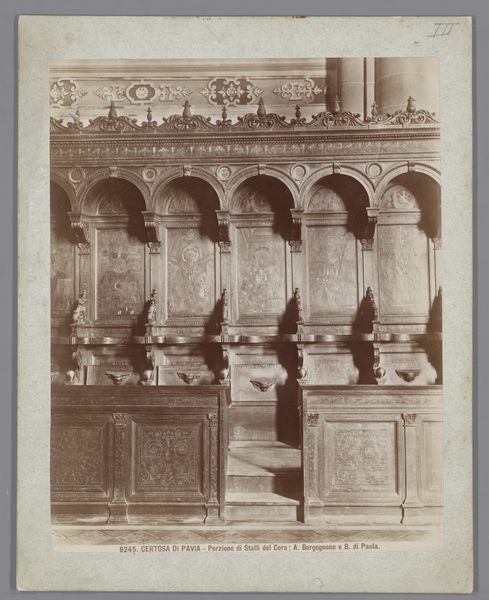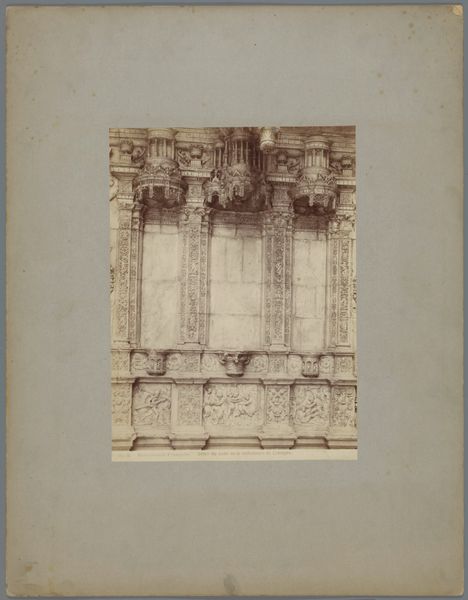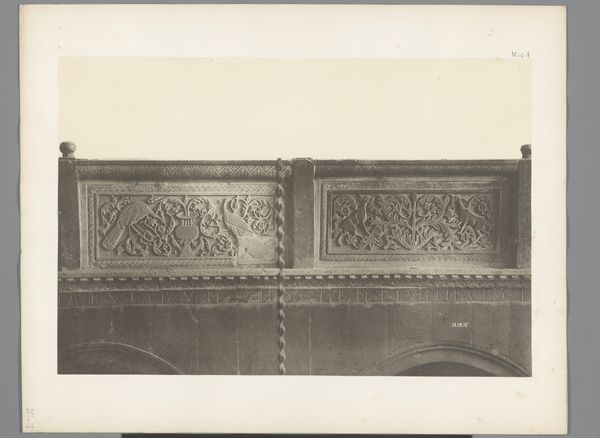
carving, print, relief, photography, gelatin-silver-print, marble
#
carving
# print
#
relief
#
photography
#
geometric
#
ancient-mediterranean
#
gelatin-silver-print
#
history-painting
#
marble
Dimensions: height 311 mm, width 395 mm
Copyright: Rijks Museum: Open Domain
Curator: Here we have a photograph, specifically a gelatin-silver print, taken before 1885 by Carl Heinrich Jacobi. The work captures a relief featuring griffins from the San Marco in Venice. Editor: It feels austere, almost like an archeological fragment salvaged from a lost civilization. There's such deliberate geometry within those carved panels, though, that seems so deliberate for antiquity. Curator: Well, the griffin itself is an ancient symbol, common in the art of the Near East and Mediterranean. As a hybrid creature, blending eagle and lion, it represents a powerful guardian – wisdom and strength combined. Placing them at San Marco emphasizes Venice’s own aspirations of power and protection, right? Editor: Right, and what’s interesting is thinking about the marble itself, likely quarried and transported to Venice. How many hands were involved in extracting, shaping, and carving this material before Jacobi even captured it with his lens? Curator: It’s an important consideration. These griffins served as visual markers of authority and status, particularly important in a mercantile republic like Venice. Their repetition reinforced the idea of a continuous, unbroken lineage of power. This building becomes more than an administrative hub; it declares the authority of a civic, economic, and political center. Editor: Exactly! The conscious choices surrounding material acquisition and artisanal labor are all attempts to convey influence. I wonder how accessible that message really was beyond the elite classes. Curator: Regardless, the symbolic power clearly endured, considering Jacobi chose to document it through photography in the 19th century. He understood that images carry cultural weight through generations. Editor: And in doing so, ensured a future audience could examine both image and medium as material indicators of cultural continuity. Fascinating! Curator: Absolutely! There's a deep conversation here between antiquity, symbolism, and the technologies used to convey both through time. Editor: I hadn’t considered it that way, a convergence of so many processes. Food for thought, thank you.
Comments
No comments
Be the first to comment and join the conversation on the ultimate creative platform.
